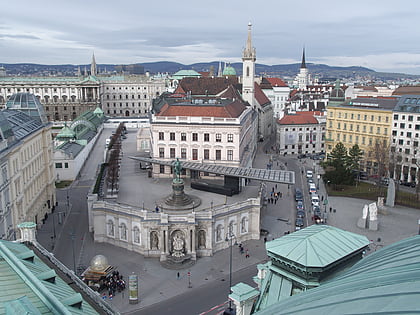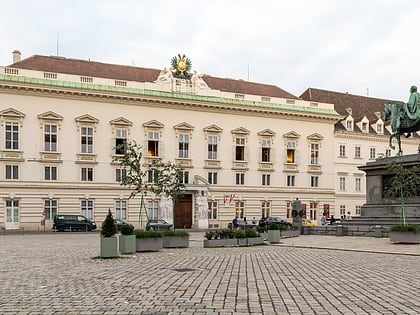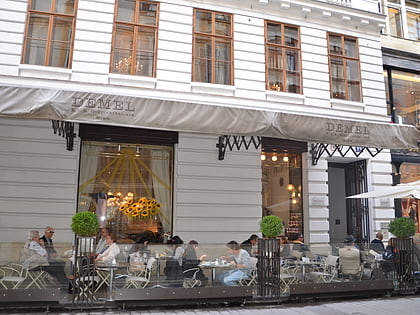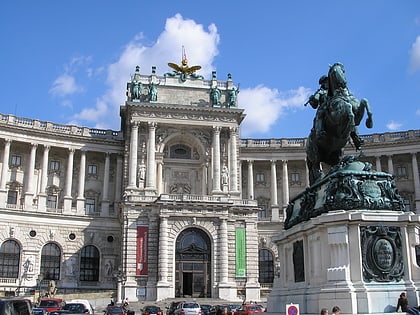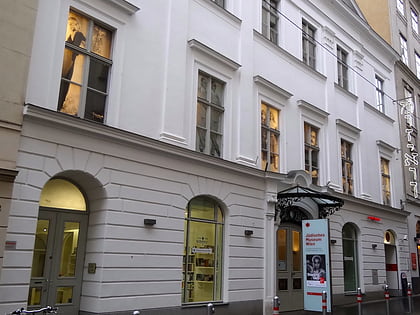Agate Bowl, Vienna
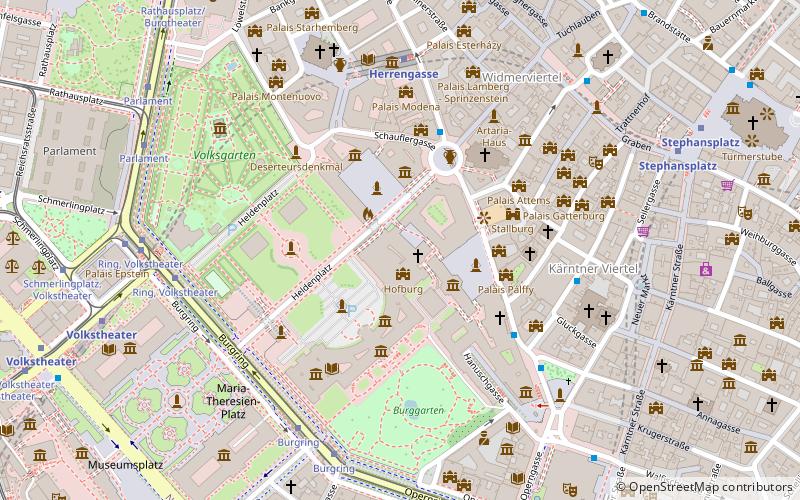
Facts and practical information
The Agate Bowl is a hardstone carving in the shape of a bowl cut out of a single piece of agate, possibly in the fourth century at the court of Constantine, and now displayed in the Imperial Treasury at the Hofburg Palace in Vienna, Austria. For centuries it was widely regarded as the "greatest masterpiece" and the "best and most important piece" in the collection. In 1564, Holy Roman Emperor Maximillian II and his brothers declared it by deed to be an "inalienable heirloom of the house of Austria". They valued this ancient precious stone carving, not just for its craftsmanship, but for a "natural miracle" in the stone itself that reveals a mysterious inscription—the name XRISTO at the bottom of the bowl within the grain of the stone. It is now generally believed that the inscription inspired the legend that the bowl was the Holy Grail. The Agate Bowl is the largest carved stone bowl in the world. ()
Innere Stadt (Widmerviertel)Vienna
Agate Bowl – popular in the area (distance from the attraction)
Nearby attractions include: Hofburg, Spanish Riding School, Heldenplatz, Imperial Treasury.
Frequently Asked Questions (FAQ)
Which popular attractions are close to Agate Bowl?
How to get to Agate Bowl by public transport?
Bus
- Michaelerplatz • Lines: 1A, 2A (4 min walk)
- Habsburgergasse • Lines: 1A, 2A (4 min walk)
Metro
- Herrengasse • Lines: U3 (5 min walk)
- Stephansplatz • Lines: U1, U3 (8 min walk)
Tram
- Burgring • Lines: 1, 2, 71, D, U2Z (6 min walk)
- Ring, Volkstheater • Lines: 1, 2, 46, 49, 71, D, U2Z (7 min walk)
Light rail
- Oper, Karlsplatz • Lines: 62, Wlb (10 min walk)
- Karlsplatz • Lines: 1, 62, Wlb (12 min walk)
Ferry
- Nationalparkboot Lobau (19 min walk)
Train
- Wien Mitte (22 min walk)
- Wien Rennweg (32 min walk)






